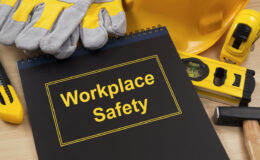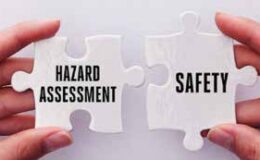By Chris Demeter, Senior Loss Control Consultant
Are you prepared for an emergency when it happens in your workplace? If your workplace has more than 10-employees, it is recommended you develop a written emergency action plan. At a minimum, your emergency action plan should include the following:
- A preferred method for reporting fires and other emergencies;
- An evacuation policy and procedure;
- Emergency escape procedures and route assignments such as floor plans, workplace maps and safe or refuge areas;
- Names, titles, departments and telephone numbers of people within and outside your company to contact for additional information or an explanation of their duties and responsibilities under the emergency plan.
- Procedures for employees who remain to perform or shut down critical plant operations, operate fire extinguishers, or perform other essential services that cannot be shut down for every emergency alarm before evacuating.
Review rescue and medical duties for any workers you designate to perform them. You may want to determine an assembly location and procedures to account for employees after an evacuation. In addition, you must put into place methods to alert employees when an emergency is taking place.
The alarms must be distinctive and recognized by employees as a signal to take the appropriate action. That action may be to evacuate or seek shelter in a safe location.
Everyone in the workplace must be able to hear, see or otherwise perceive the signal. Training, drills training, and drills are a major part of an emergency action plan. It does no good to have a plan that employees are not familiar with or have not practiced. Review these suggestions for training employees about emergency procedures in your workplace.
Train like it is for real. You will be better prepared for the real thing the more the training reflects reality.
Ensure your supervisors and employees know how to react and they practice an accountability system.
Coordinate your training with local authorities and your alarm company. When you finish the training, have a meeting immediately following it to review what went right and what went wrong.
Develop action items and assign their completion to employees so they may follow-up on them.
Implement your action items into your emergency action plan and continue with the training and drills.
Obtain and maintain any special equipment to deal with anticipated emergencies. Designate employees you want to train in the equipment’s proper use. This may include respiratory protection, chemical-resistant suits, hand/ head/eye protection or other specialized equipment made necessary by the nature of your business.
By their nature, emergencies are unannounced. When an emergency strikes, proper planning and training is the only way you may protect yourself.
Because you have not had an emergency in your facility does not mean you will not have one tomorrow.
Take the time to plan, prepare, and train. If you do have an emergency, you will know what to do. This will help increase the chance of a favorable outcome for what could otherwise be a tragic event. In an emergency, there is only one priority – the preservation of human life.
An emergency action plan template can be found on the secure client portal login through the MTMIC website: www.mtmic.com/blog.
If you have any questions about an emergency action plan, contact your Loss Control Consultant.






